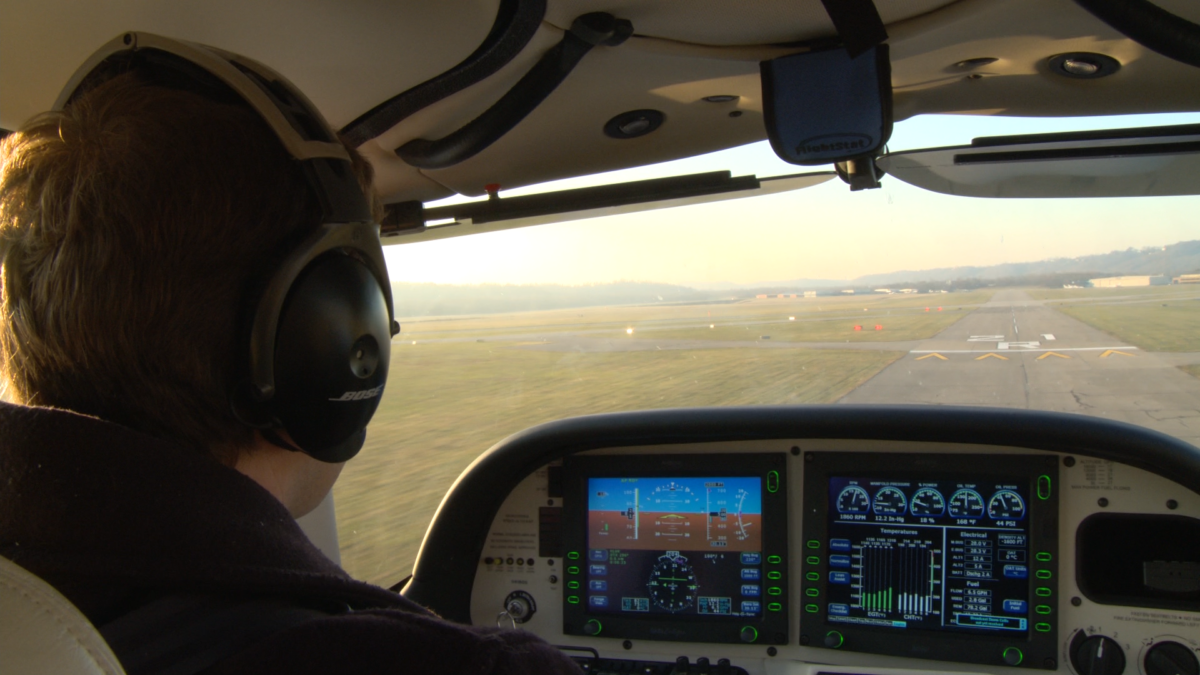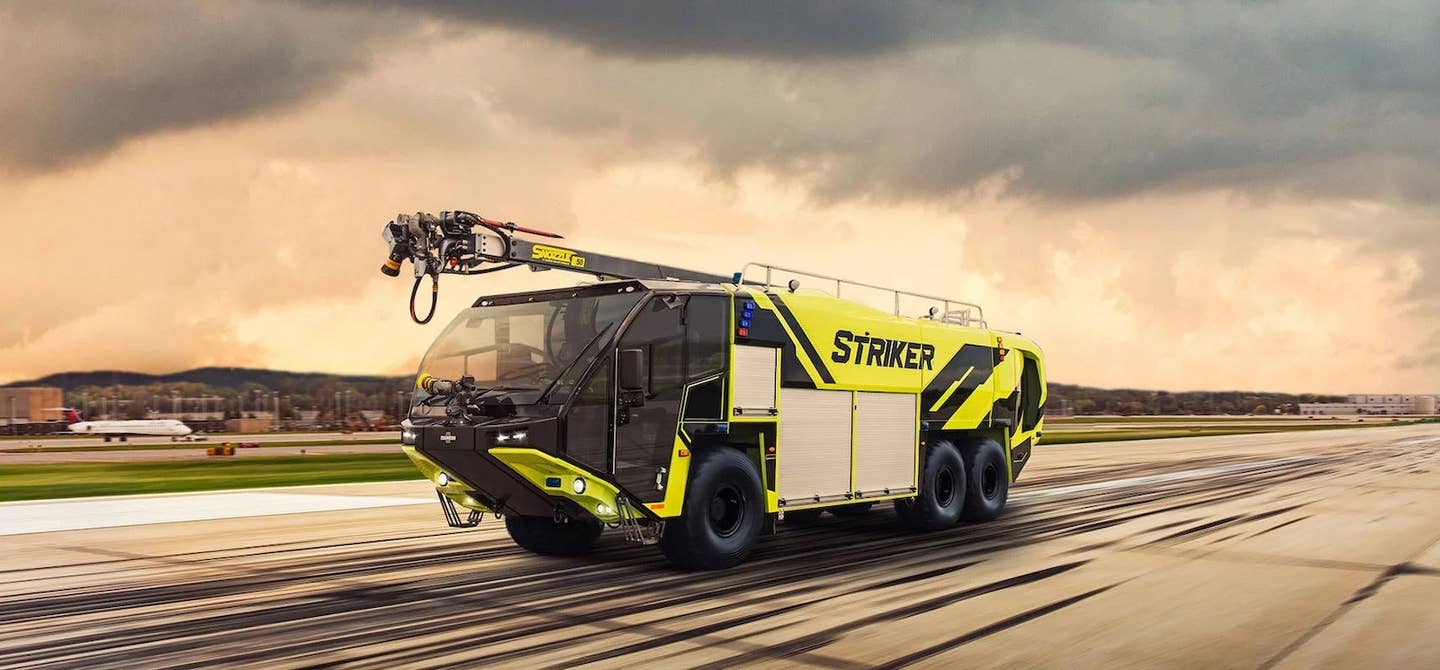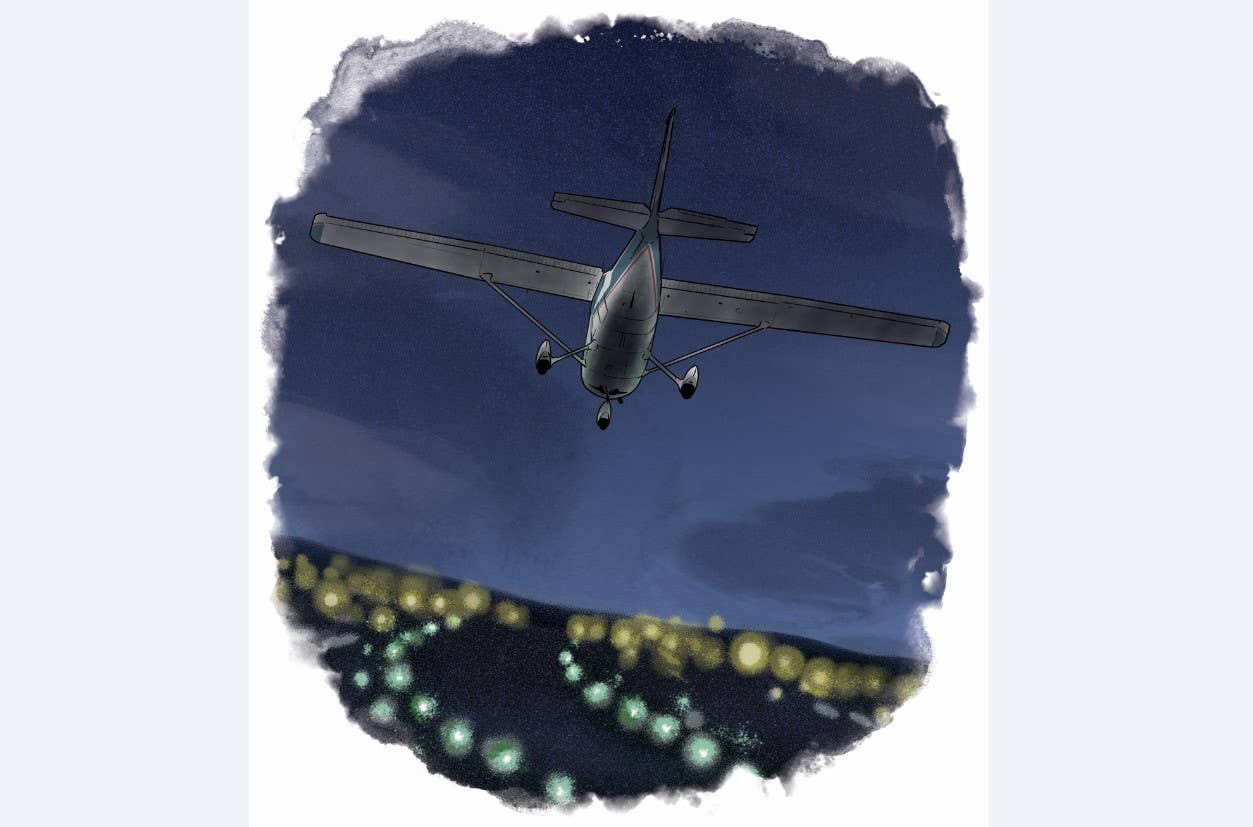Thoughts on Closing a Runway
For more than 80 years, Runway 21R, one of the original paved runways at Cincinnati’s Lunken Airport, has withstood generations of student pilots.

On final to Runway 21R at Lunken Airport [Courtesy of Sporty’s]
For more than 80 years, Runway 21R, one of the original paved runways at Cincinnati’s Lunken Airport (KLUK), has withstood generations of student pilots, none of whom I recall careening into nearby hangars or even digging serious divots in the adjacent grass. But the FAA is knuckling down about a long-time mandate that the runway has to go.
Why? Well, it’s old and has centerline drainage but, most importantly, it’s too close to a row of corporate hangars full of jets—used for both business and privately owned. I don’t know if FAA standards have changed or if they are just being enforced, but I do know that some of these “big operators” have expansion plans and there’s nowhere to go except into the runway’s safety area. The reality is, with 21R gone, accommodating traffic from three busy flight schools with a steady stream of “big iron” on a single runway is going to be a challenge...or, as one controller opined, “It sucks.”
You may have guessed by now that occasionally I don’t see things the same way as the FAA, but this edict seems exceptionally onerous. It reduces a heavily used airport, with three (at one time four) runways, to the single 6,500-foot, fully IFR-equipped 21L-03R. Oh, there is one other “old-timer”—Runway 25—still in use but restricted to aircraft under 12,500 pounds. It’s further limited because its final approach conflicts with the 21L final, and speculation is that it too is on the way out.
Everybody who flies in the Midwest knows that after a cold front steamrolls through the Ohio Valley, the normal south-southwest surface winds typically shift around to north-northwest and landing on 21L demands significant crosswind capabilities and pilot skills. And, with “Sunken Lunken” in a valley surrounded by hills, the turbulence approaching that runway can be awesome. (I confess that not too long ago, after waging an interesting battle with a turbulent crosswind in my Cessna 180, the tower asked, “Martha, are you OK?”) When these winds reach the edge of max crosswind capability for large turbine airplanes, they’re relegated to using Greater Cincinnati (KCVG) some 12 miles away across the Ohio River in Kentucky. This is generally not popular with corporate executives or passengers.
Maybe I’m just being old-fashioned or, as I get older, change is becoming more difficult to accept. And old memories die hard, like when you find out your old grade school has been demolished or your childhood neighborhood has become a slum, when you find yourself mourning the loss of an old lover...or even a runway (not to mention an airport).
I took my first hour of instruction and gave my first hour of dual on what was back then Runway 20 (because magnetic orientation changes over the years). And many, many times I would surprise a student by saying, “Hey. I’m tired of grinding around this traffic pattern with you. Let me out here, tell the tower you need to taxi back, and make three takeoffs and landings by yourself. And, REMEMBER, you’re going to be high on final!” Of course, this had been coordinated with the tower (and couldn’t happen like that these days), but I’d hop out and sit in the grass alongside the runway, making daisy chains or chewing on a piece of clover while my student made those first glorious three solo takeoffs and landings. Now, I was way across the airport from my flying school and, after his full stop landing, the tower took great delight in clearing the student back to the hangar. He was usually so excited he’d forget about me. So I’d climb the tower steps and use their phone to get somebody to come pick me up.
Runway 21R was the scene of my introduction to ground loops. A group of guys (one of them a CFI who knew how to fly taildraggers) bought an Aeronca 7AC and called themselves the Kamikaze Flying Club. Frank was a little sweet on me and anxious to show his prowess so we went flying in the little yellow airplane with the famous shark’s mouth painted on the nose. Taxiing back to the tiedown, things suddenly began to spin—I saw grass, the taxiway behind us, the tower, and some hangars. It was fun so I laughed and said, “Oh Frank, do it again!” He glowered at me and said, “Shut up! That was a ground loop.” No damage, except to this future airline pilot’s pride.
Another afternoon, when the winds were strong and steady, blowing right down the runway, Mike Smith and I were out in one of Cincinnati Aircraft’s Champs. (Mike’s father, Bud Smith, owned the operation so “rental” was no problem.) Out on final, he was able to slow the airplane to the edge of a stall...and it stopped! We were stationary over the golf course. After clearing us to land two or three times, the controller—who had little sense of humor—told us to LAND or go somewhere else.
The Procter and Gamble flight department had occupied with a fleet of Douglas DC-3s the old Aeronca hangar at the end of 20L since 1950. They’d even designed an ingenious “track” to turn their airplanes sideways on the ramp and winch them into the hangar. Well, the ’60s brought the Gulfstream I, and the only way they’d fit was to raise the hangar roof. P&G being P&G, thought raising the roof and obstructing the tower’s view of the approach end of the 20L was no problem. The city just displaced the threshold of 21R by a considerable 900 feet.
Then the city constructed a wide taxiway for the Gulfstreams crossing at that unusable end and put in a narrow blacktop one for the little guys taking off at the new threshold. It was less than adequate—too narrow to even turn into the wind for runup. That was the impetus for a midnight (after the tower closed) expedition out to the new “corporate” taxiway on our bicycles with cans of traffic paint, graph paper, and measuring tapes. In honor of the notoriously pompous flight department manager who exerted considerable “juice” with the city, we spent all night painting, in large letters: THE NELSON U. ROKES MEMORIAL TAXIWAY.
Nobody knew who did it but, kind of surprisingly, both the company pilots and Nelson loved it. For years, the tower commonly cleared airplanes to their hangar, “via the memorial!”
It was a different time, and I have to accept today’s 8-foot fences and security cameras as the norm—obsolete runways and all those tempting bridges have to go. But, oh, how I miss those days.

Subscribe to Our Newsletter
Get the latest FLYING stories delivered directly to your inbox






